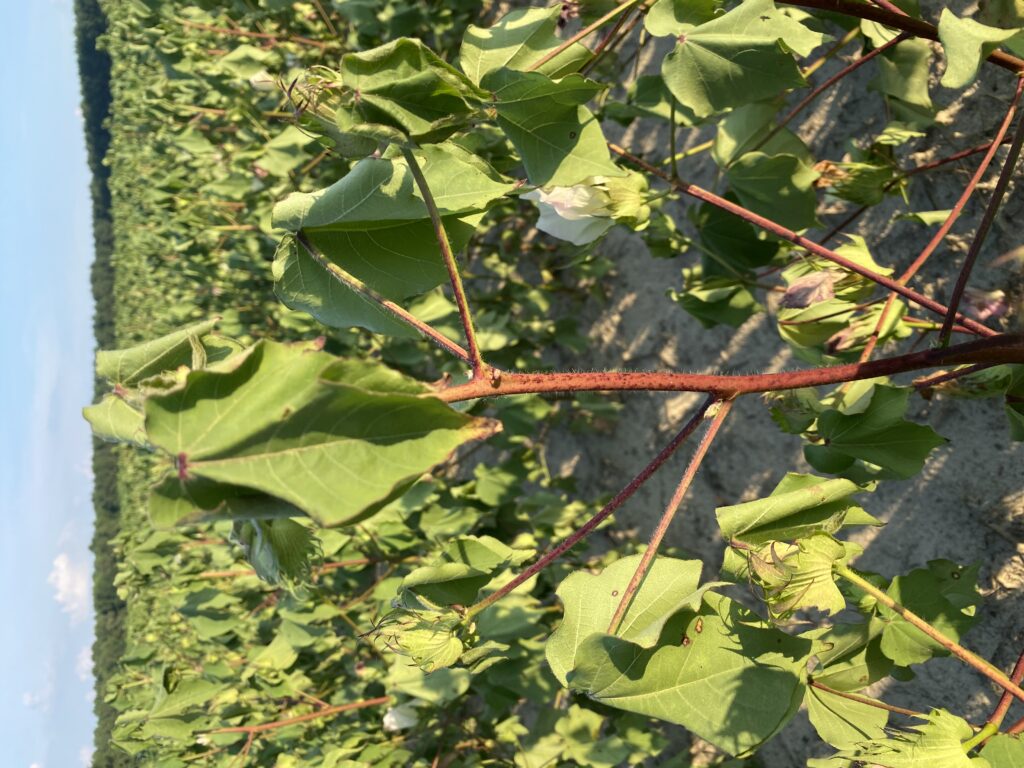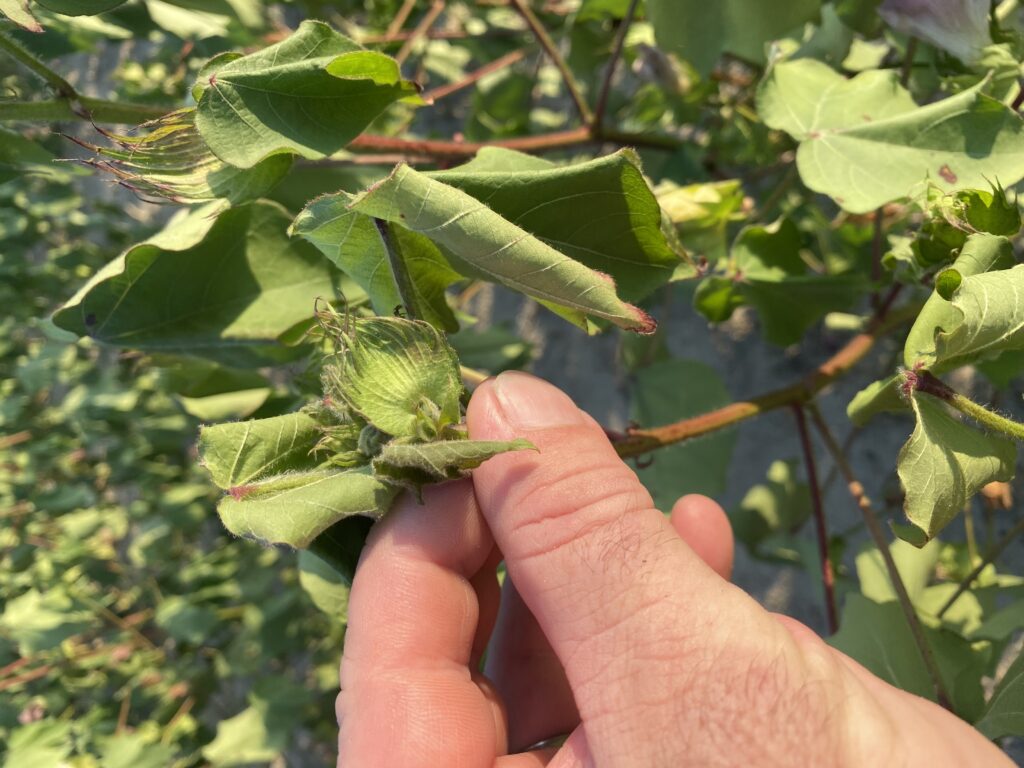Management Considerations for the Current Crop Situation (Collins & Edmisten)
go.ncsu.edu/readext?1084745
en Español / em Português
El inglés es el idioma de control de esta página. En la medida en que haya algún conflicto entre la traducción al inglés y la traducción, el inglés prevalece.
Al hacer clic en el enlace de traducción se activa un servicio de traducción gratuito para convertir la página al español. Al igual que con cualquier traducción por Internet, la conversión no es sensible al contexto y puede que no traduzca el texto en su significado original. NC State Extension no garantiza la exactitud del texto traducido. Por favor, tenga en cuenta que algunas aplicaciones y/o servicios pueden no funcionar como se espera cuando se traducen.
Português
Inglês é o idioma de controle desta página. Na medida que haja algum conflito entre o texto original em Inglês e a tradução, o Inglês prevalece.
Ao clicar no link de tradução, um serviço gratuito de tradução será ativado para converter a página para o Português. Como em qualquer tradução pela internet, a conversão não é sensivel ao contexto e pode não ocorrer a tradução para o significado orginal. O serviço de Extensão da Carolina do Norte (NC State Extension) não garante a exatidão do texto traduzido. Por favor, observe que algumas funções ou serviços podem não funcionar como esperado após a tradução.
English
English is the controlling language of this page. To the extent there is any conflict between the English text and the translation, English controls.
Clicking on the translation link activates a free translation service to convert the page to Spanish. As with any Internet translation, the conversion is not context-sensitive and may not translate the text to its original meaning. NC State Extension does not guarantee the accuracy of the translated text. Please note that some applications and/or services may not function as expected when translated.
Collapse ▲Several center pivots have been running over the last few days and rightfully so. With temperatures in the mid to upper 90’s for several days now, we are reminded as to why we are never more than 4-5 days away from drought at any given time. Many fields have clearly wilted over the past few days, with sandier parts of the field wilting first, which progressed to more severe wilting and in bigger areas as the number of hot days without rain elapsed. Bottom areas of fields appear to still be holding on, but another day or two of severe heat, and those areas will also be affected. A few folks may have received rain today or this evening (7/27) which would be some badly needed relief. Much of the Northeastern cotton producing area received a nice rain this evening, which may negate the need for much of this article.
This is a critical period for water demands for cotton. Late April through early May planted cotton is anywhere from the third to the fifth week of bloom, which is peak demand for water, whereas late May planted cotton is just now beginning to bloom. Drought during this time could certainly impact yield, therefore those with irrigation capabilities need to be using it. This article from last year includes general weekly water requirements that should be divided into 2 or 3 irrigations. We still have strong yield potential in dryland fields, if ample rains resume sooner than later. August rains are a rather large determinant of the size of our crop in most years. We still have time, but rains do need to arrive soon, and it would be nice to see temperatures cool down somewhat as well.
With regard to management, Below is something I’ve noticed quite commonly over the past couple of days, in addition to the obvious wilting in most fields. The first photo is what appears to be a rather growthy plant, as indicated by the elongated internodes a short distance down from the terminal, and a relatively high number of nodes above white bloom. This cotton is in its third week of bloom and still has 7 or more nodes above white bloom, with internodes between the 4th and 5th true leaf down from the terminal exceeding 3 to 4 inches. This was observed even in the wilted areas of the field, whereas the bottom areas of the field were even more growthy. By all standards, this would suggest a relatively high or rapid growth rate, which would normally necessitate a PGR application.
However, given the current situation, we should probably pause that decision at least until rains return, and/or have time to respond to rains. The reason for this is because the plant is also signaling some signs of stress that are commonly overlooked. We’ve said many times before that wilting cotton shouldnt be treated with PGRs for obvious reasons. In addition to that, notice the reddening of the main stalk in the upper region of plant. This is a commonly overlooked sign of stress, especially when there isnt much of a boll load on the plant just yet. Secondly, there are also several plants with rather large squares in the terminal bud, which is another indicator that the plant is slowing down or is under some sort of stress.
For now, at least, it appears that this heat and drought are doing all the growth regulation we need. Once this stress is alleviated (by rain) and the plant has had time to respond and resume growing, we can revisit some of these decisions to determine if they are necessary at that time. Until then, it may be wise to pause until we know exactly how severe and prolonged this dry spell may be.
Not every field, nor every part of the state may be experiencing this. What we have described above has been observed in many parts of the Coastal Plains and the Piedmont over the past couple of days, but not all corners of the state may be experiencing the same thing. Therefore it is important to scout and treat each field accordingly.




